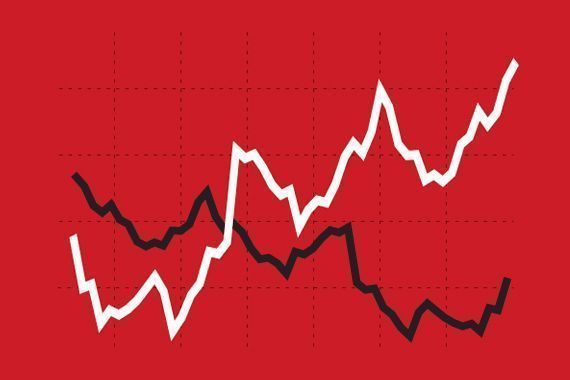Here is a selection of announcements that have made (or will make) move the prices of these companies:
(Come back and read us from time to time
so as not to miss an update)
Canopy Growth (WEED.TO, $ 17.69) announced Thursday that it has signed an agreement that grants it the right to acquire U.S. cannabis edibles company Wana Brands if the United States decides to legalize tetrahydrocannabinol (THC) at the level federal. Wana manufactures and sells cannabis gummies in Colorado and licenses intellectual property to partners in several other states and Canada. Under the deal, the Smith Falls, Ont., Cannabis producer will make an upfront cash payment of US $ 297.5 million and acquire three purchase option agreements to acquire the Wana Mountain High Products entities, Wana Wellness and Cima Group. On the exercise of each purchase option agreement, Canopy Growth will make a payment equal to 15% of the fair market value of the entity at the time of exercise of the option. Canopy Growth may also make additional deferred payments two and a half and five years after the initial payment.
The American investment bank Morgan Stanley (MS, US $ 98.06) on Thursday reported better than expected results thanks to record revenues from its capital markets activities and wealth management. The group posted a net profit of 3.71 billion US dollars from July to September, up 36% from the same period last year. Reported on a per share basis and excluding special items, the benchmark for analysts, net income reached US $ 1.98, well above the US $ 1.71 the market expected. Revenues stood at US $ 14.75 billion, better than the US $ 13.95 billion expected by analysts. The bank was particularly successful in its various transactions with institutional clients, where it generated US $ 7.5 billion in revenues, up 22% year on year. M&A or IPO advisory activities alone generated US $ 1.27 billion compared to just US $ 357 million in the third quarter of 2020. Equity brokerage reported 2, US $ 88 billion (+ 25%) and fixed-rate product brokerage US $ 1.64 billion (-16%).
Bank of America (BAC, US $ 43.53) saw its profit jump 58% in the third quarter, boosted by the improving economy that allowed it to reduce the reserves built up at the start of the pandemic and its banking activities. ‘business. The financial institution, which had set aside several billion to deal with possible unpaid debts from its customers in 2020, released 1.1 billion US dollars over the period. Signs of the financial health of its retail customers: Deposits in retail banking increased by 16% and spending on debit and credit cards by 21%. The total volume of loans granted by the bank to individuals and small businesses remains down, by 12%, compared to the same period in 2020, with customers paying more off their debts and borrowing less for a first real estate purchase. But it increased compared to the previous quarter, a sign that this essential activity for banks, which had slowed sharply during the pandemic, is picking up a little. Net interest income, the difference between the interest Bank of America earns on loans to its customers and the interest it pays savers and other creditors to use their money, grew 10% thanks to increased deposits and government lending activity to businesses to help them weather the pandemic (PPP). Non-interest income increased by 14%. The bank’s total turnover rose 12% to US $ 22.77 billion, more than the 21.78 billion expected by analysts. Its net income reached US $ 7.69 billion.
The net profit of Citigroup (C, US $ 69.86) jumped 48% in the third quarter, boosted by the decline in reserves set aside at the start of the pandemic and its investment banking activities. Like the rest of the major US banks, Citi had built up a financial cushion of several billion US dollars in 2020 in case its customers could no longer repay their loans. With the economy improving and personal and business finances having held up fairly well during the crisis, Citigroup is gradually reducing its reserves and released another US $ 1.16 billion in the third quarter. This amount fueled its net income, which totaled US $ 4.6 billion. Reported on a per share basis and excluding one-time item, earnings came in at US $ 2.15, where analysts expected US $ 1.65. The bank’s turnover, for its part, fell slightly, by 1%, to US $ 17.1 billion, due in particular to the sale of retail banking activities in Australia. Excluding this transaction, it would have increased by 3%. On the institutional client side, Citi’s revenue grew 4%, driven by the activities of investment bankers providing advice to companies wishing to raise money or carry out mergers and acquisitions transactions. Income from brokerage activities as a whole fell 4%, despite a 40% jump in equity market trading.
The uranium producer Cameco (CCO.TO, $ 31.60) said on Wednesday that it was exploring the possibility of partnering with Terrestrial Energy for possible future deployments of nuclear power plants in North America and elsewhere in the world. The two companies signed a non-binding memorandum of understanding that could allow Cameco of Saskatoon to supply uranium, fuel and supplies for the molten salt integral reactor nuclear power plants of Terrestrial, a company of Oakville, Ontario. The companies are also investigating the potential of Cameco’s uranium conversion facility in Port Hope, southern Ontario, for the supply of integral molten salt reactor fuel. Cameco is one of the world’s largest producers of uranium fuel for nuclear power generation. In particular, it supplies fuel and fuel assemblies for CANDU reactors in Canada and abroad. Terrestrial Energy is a nuclear technology company that claims to have improved the efficiency of nuclear power generation by 50%. Terrestrial Energy’s molten salt integral reactor plant is one of three types of small modular reactor plants being considered for deployment at Ontario Power Generation’s Darlington Nuclear Generating Station. Terrestrial says its Oakville operations represent the largest small modular reactor power plant technology development project in Canada.
– .


